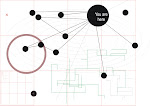
One of the surprising encounters with place has beeb in N.T. Wright’s Simply Christian which our small group had been working through.[1] Wright, in discussing heaven and earth develops a 3 part typology of how people consider God’s space relating to ours, which he returns to repeatedly in the book. Option one is pantheism and panentheism where God’s space and ours are virtually the same thing. Option two is a deistic and Gnostic model where God is far removed from ours space. Option three, which Wright favors, is where heaven and earth overlap and interlock in different ways. Space in general bears these potentials of overlap, and some places in particular are places of contact. These place of overlap and connection are made by the Holy Spirit, “joining heaven and earth”[2] including the Old Testament of meeting and temple, individuals and the church community, the bible, the sacraments, and the coming Kingdom all entail physical space and places in particular. Through this physicality of place the coming Kingdom received its witness in the world. In Wright’s third version, “heaven and earth, also future and present, overlap and interlock.”[3] Wright discusses the common conception of heaven as going to this far removed ethereal place favoring that at the reappearing of Jesus, the veil will be lifted between heaven and earth. While the veil will not be removed until Christ’s reappearing, it has varying degrees of thickness. But until then, the resurrection of Jesus allows us opportunities to glimpse into God’s new creation here and now. As the Spirit empowered church seeks, in anticipation, to help bring about this new creation among a fallen and groaning world.
I think his vision here is helpful for thinking of place and in particular sacred space. What struck me was its simplicity as points of overlap or connection between the heaven and earth. While it is certainly not a formal study of sacred space, it does point to certain identifiable places of contact where the evocative image of the veil is slid aside to show what awaits. Wrights vision affirms our humanity and creation, rooting our newly re-createdness in the resurrection, we are allowed to see and experience thinness of the veil. It also focuses on the coming Kingdom and not on the spiritual experience. My fear is that our experiences with sacred space, while profoundly emotional, often end up as self-serving consumeristic events rather than pointing beyond their immediacy. Perhaps this is the strength of the sacramental vision that its meaning rests ultimately in God’s action.
I think his vision here is helpful for thinking of place and in particular sacred space. What struck me was its simplicity as points of overlap or connection between the heaven and earth. While it is certainly not a formal study of sacred space, it does point to certain identifiable places of contact where the evocative image of the veil is slid aside to show what awaits. Wrights vision affirms our humanity and creation, rooting our newly re-createdness in the resurrection, we are allowed to see and experience thinness of the veil. It also focuses on the coming Kingdom and not on the spiritual experience. My fear is that our experiences with sacred space, while profoundly emotional, often end up as self-serving consumeristic events rather than pointing beyond their immediacy. Perhaps this is the strength of the sacramental vision that its meaning rests ultimately in God’s action.







